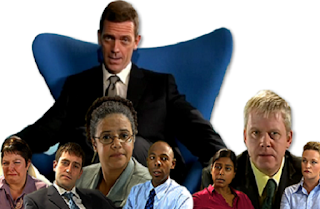Archives
now browsing by author
THE ROOT CAUSE OF PEOPLE PROBLEMS

I have been working with leaders in all walks of life, profit and nonprofit, for more than forty years now and have come to appreciate how hard leadership can be. It is complex and high-pressured work. And, in my experience with more than 4,000 leaders, the most difficult aspect of it is leading people.
So it’s not surprising that most leadership books focus on people-related issues. I list 50 kinds of people problems in my book, such as: persistent internal conflicts, distrust, employee disengagement, low level of cooperation, low morale, turf battles, etc. If you step back and look at all of the people problems over the years, two interesting patterns show up. One, they keep reappearing, year in and year out. Two, they are typically addressed one or two at a time. A search at the present time (November, 2018) on Amazon for books on “employee engagement” yields a list of 1,000 books.
If you drill down, however, an even more interesting pattern shows up. All these problems have to do with people separating from one another: in silos, by disengaging, by thinking they understand when they don’t, etc. When leaders believe everybody is clear about the direction of their enterprise, but employees perform in a way that doesn’t fit that direction, leaders and employees are separated. When people blame one another for mistakes, they create separation. These separations, or disconnections, involve customers, employees, and leaders, and separations between any one set (e.g., leaders and employees) impact all three.
These disconnections keep reappearing because they are symptoms of a deeper problem – hidden system disconnections. These are the root causes of people problems. My book describes four fundamentally different kinds of enterprises, named as follows: Predictable and Dependable, Best-in-Class, Customized, and Enrichment. Each of the four has its own particular set of properly ordered connections. Each leads differently, approaches its customers differently, teams differently, uses power differently, decides differently, etc. The principles of unifying and empowering enterprises are the same, but each one of the four practices these principles differently and, importantly, when one or more of these practices are implemented that don’t belong (“properly connect”), separation occurs and “people problems” show up. If you practice consensus decision-making in a Best-in-Class enterprise or practice “steward” leadership in a Predictable and Dependable enterprise, you create contradictions and crosscurrents. Because these separations are hidden, the symptoms persist or subside and then reappear.
The essential solution to “solving” people problems is to lead and enculturate your enterprise in a manner that is consistent with your customer promise. I spell out how to do that in my book.
“LEAD RIGHT FOR YOUR COMPANY’S TYPE” GETTING POSITIVE REVIEWS
Please click on the links below to read the very favorable reviews by 800CEOread.com, C-Suite Book Club, and ChangeThis.com
800CEOread.com: 800CEORead review and Editor's Choice
C-Suite Book Club: C-Suite Book Club Review
ChangeThis: ChangeThis.com review and article
You may purchase the book at: Amazon link





 D5 Creation
D5 Creation